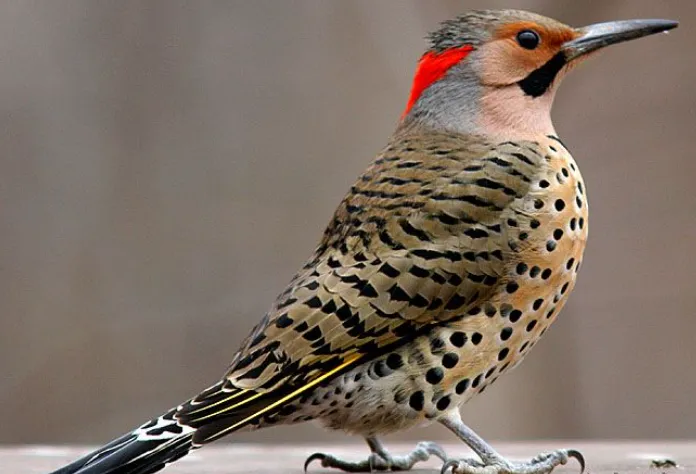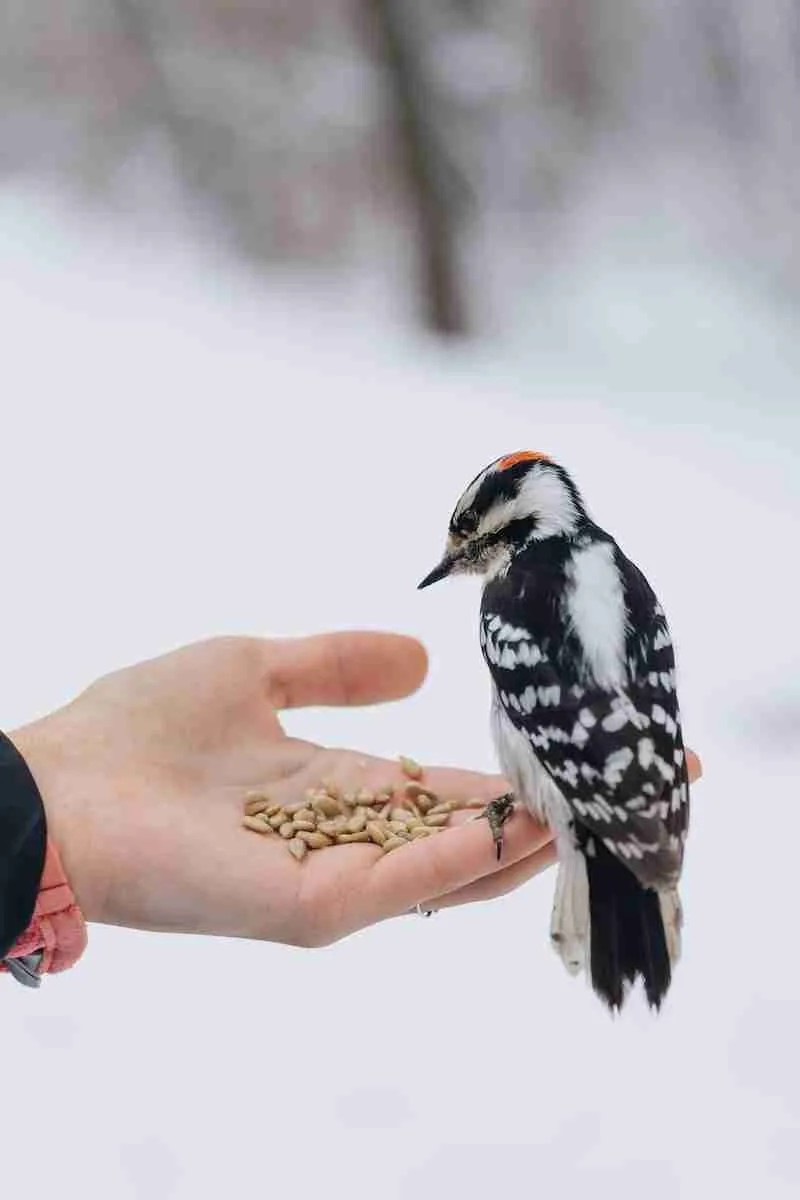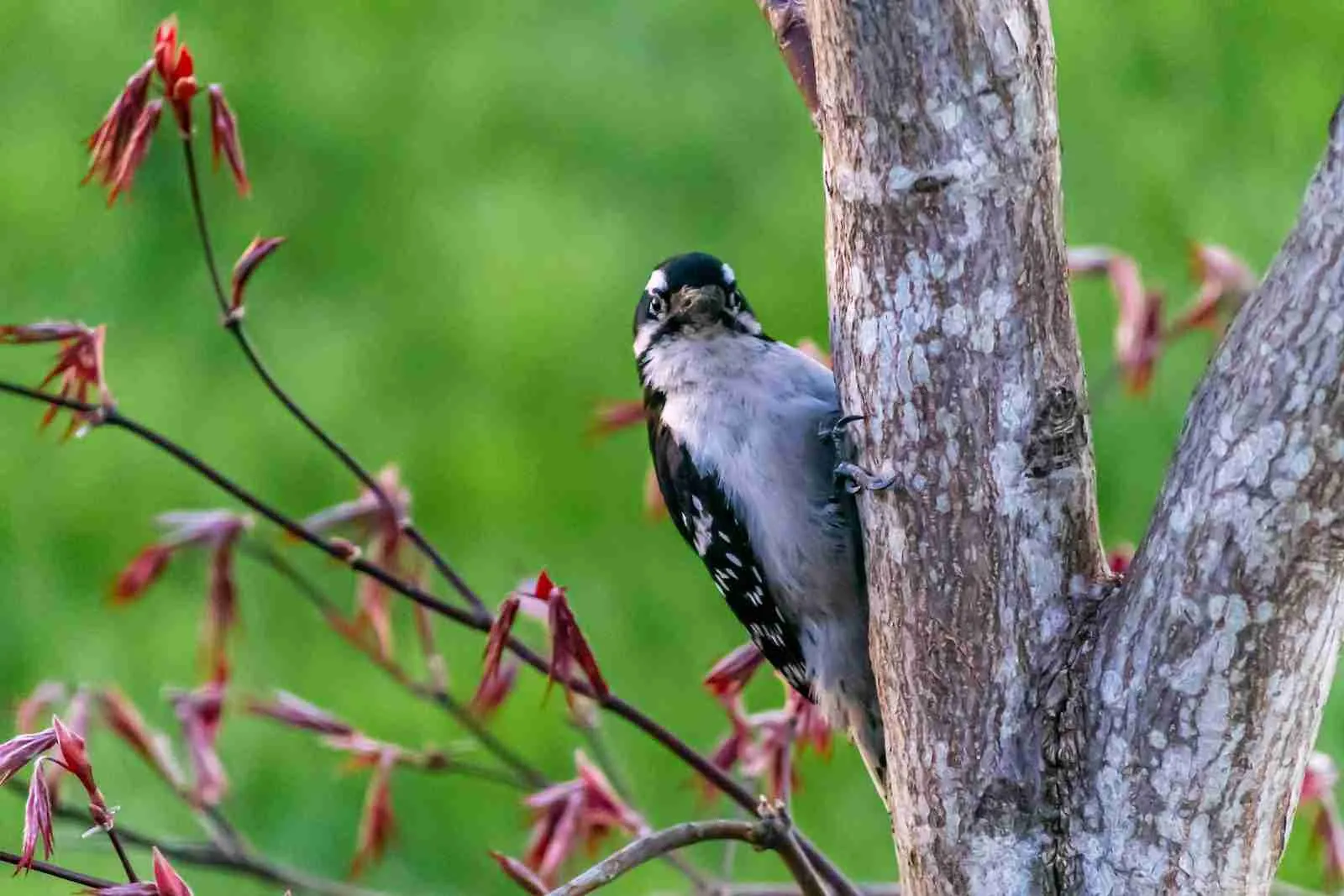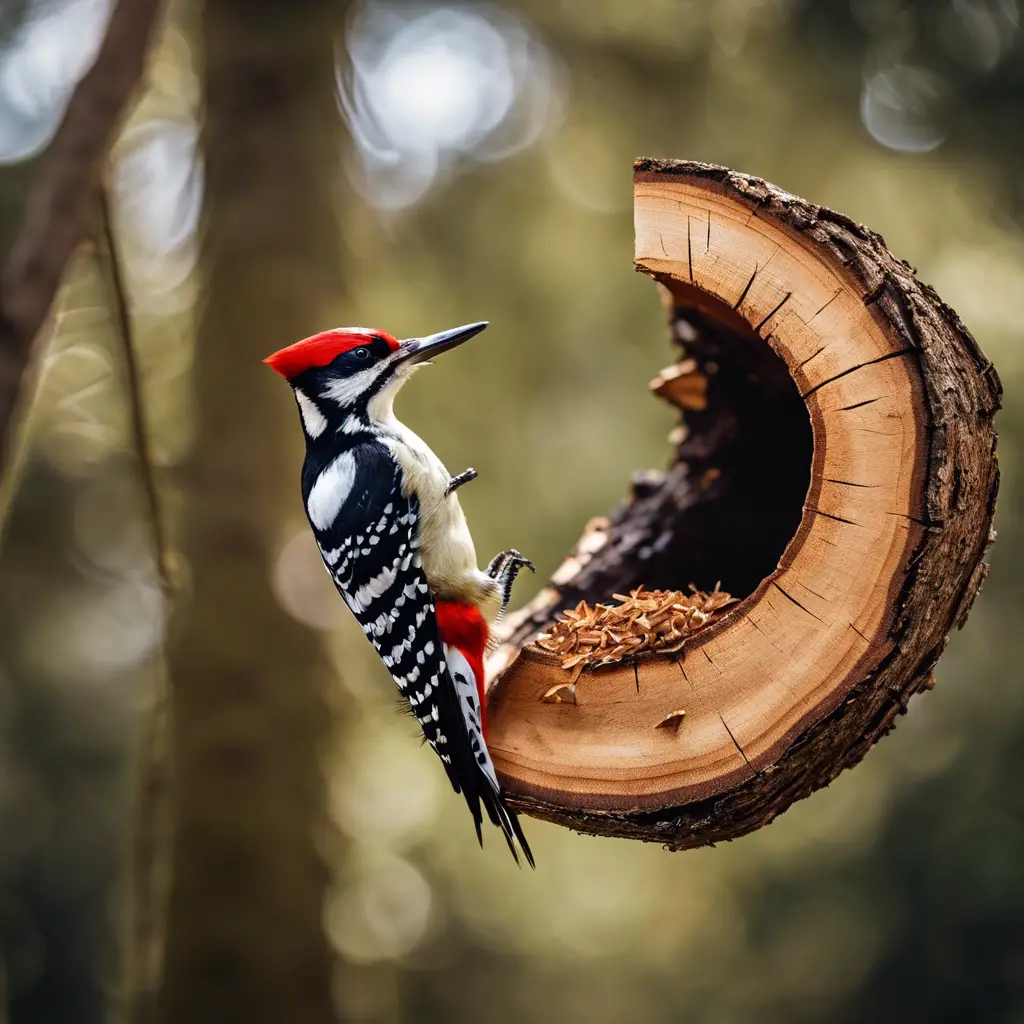There are many different types of woodpeckers that can be found in Maryland. In this blog post, we will discuss the four most common types of woodpeckers in the state. These include the Downy Woodpecker, Hairy Woodpecker, Northern Flicker, and Pileated Woodpecker. We will go over the physical features of each bird, as well as their preferred habitats and diet.
Most Common Woodpeckers of Maryland
Hairy Woodpecker
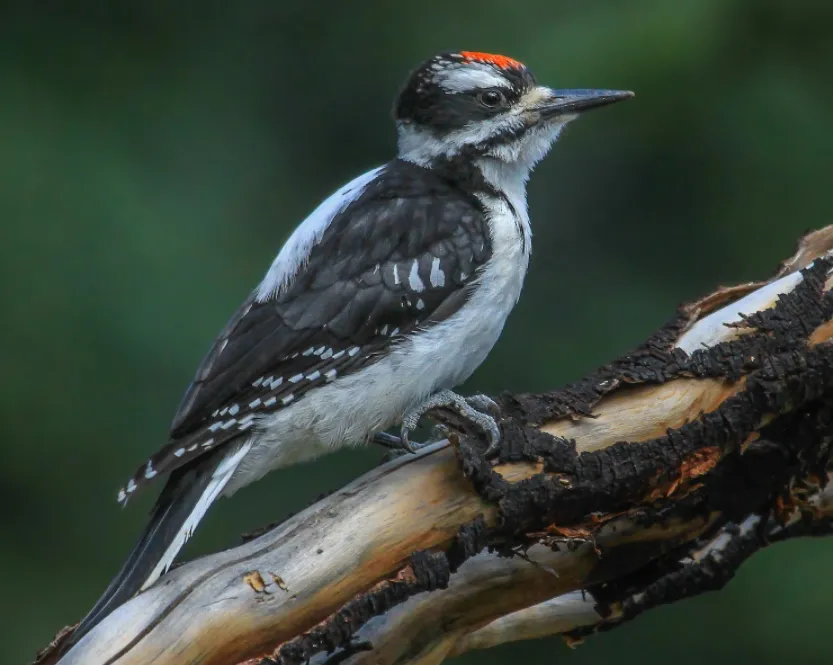
The Hairy Woodpecker is a medium-sized woodpecker found in North America. The adult male has a black back, wings and tail, with a white belly and rump. They have a white line running down the back of their necks.
Adult females usually have duller plumage than males. Both sexes have black heads with white stripes running from behind their eyes to the back of their necks. Their bills are black and their legs are grey. Juveniles have similar plumage to adults but with more muted colors.
Hairy Woodpeckers can be found in forests, woodlands and parks. They prefer areas with mature trees that have dead branches or tree trunks. They use their long bills to excavate holes in trees in search of insects. They also eat berries and nuts.
Hairy Woodpeckers are generally shy birds but can be attracted to bird feeders. If you see one at your feeder, it is likely a male as they are more likely to visit feeders than females. To attract them to your yard, try hanging a suet feeder. You can also put out a birdbath as they enjoy bathing.

Downy Woodpecker
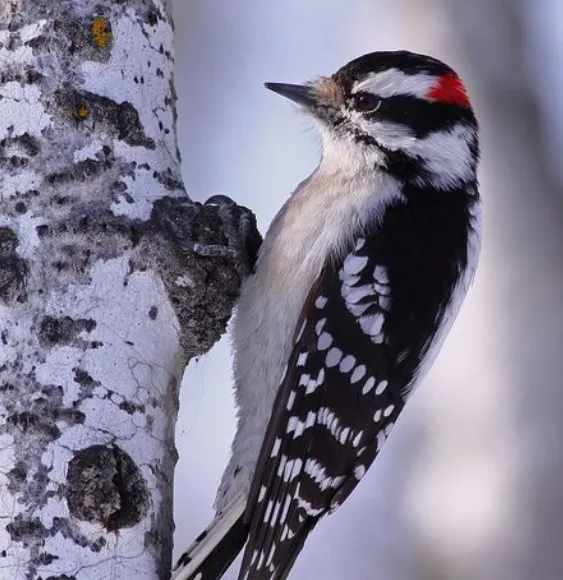
The Downy Woodpecker is the smallest woodpecker in North America. They are mostly black with a white back and wings, and have a small patch of red on the back of their head.
Males also have a red spot on their bill. These birds are very common in forests and woods throughout the eastern United States.
Downy Woodpeckers are very acrobatic birds. They are often seen clinging upside down to tree trunks and branches while they search for food. These birds eat mainly insects, but will also eat berries and other small fruits.
Downy Woodpeckers are relatively easy to identify by their size and distinctive plumage. However, they can sometimes be confused with the very similar-looking Hairy Woodpecker.
The best way to tell these two species apart is by looking at their bills. Downy Woodpeckers have much smaller bills than Hairy Woodpeckers. Another difference is that Downy Woodpeckers often have a small white patch on their lower back, while Hairy Woodpeckers do not.

Northern Flicker
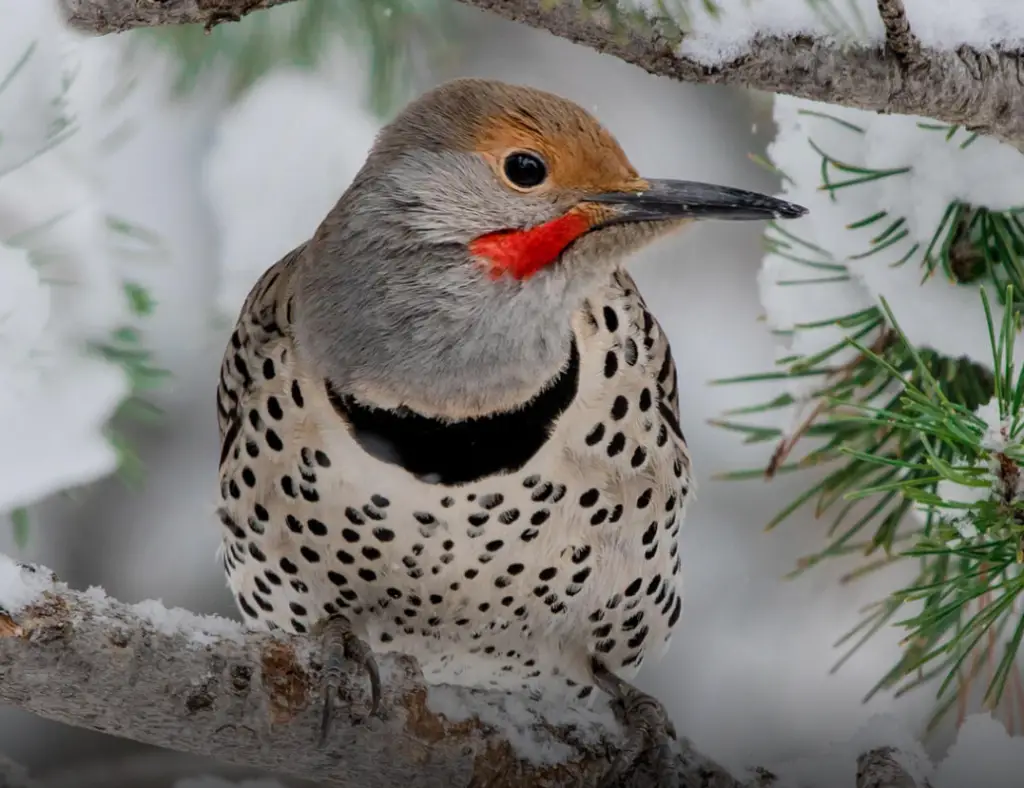
The Northern Flicker is a member of the woodpecker family. The males have a red patch on their breast while the females have a brownish patch. They are about 12 to 14 inches in length with a wingspan of about 21 to 25 inches.
The Northern Flicker is mostly brown with black bars on its back and wings. The underparts are white with black bars. The tail is brown with black bars and a white rump.
The head is brown with a black necklace. There is a red patch on the nape of the neck. The bill is long and slightly curved. The legs are long and stout. Northern Flickers are found in woodlands, orchards, parks, and suburban areas.
They nest in trees. The Northern Flicker is a ground-dwelling bird. It feeds on ants, beetles, grasshoppers, and other insects. It also eats berries and nuts. The Northern Flicker is a migratory bird. It winters in the southern United States, Mexico, and Central America.

Yellow-bellied Sapsucker
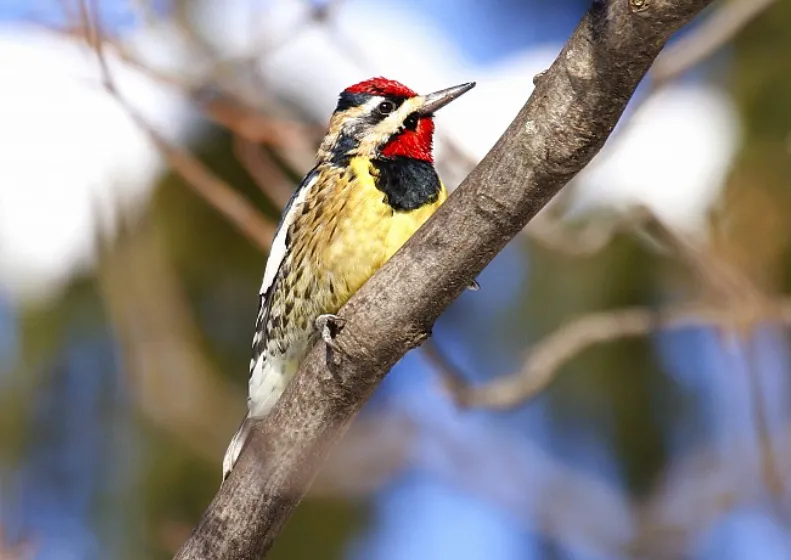
The yellow-bellied sapsucker is a medium-sized woodpecker with a black back, white breast, and yellow belly. They are found in deciduous forests of eastern North America where they breed.
These birds are named for their habit of drinking sap from trees. Yellow-bellied sapsuckers drill holes in trees and then lap up the sap that flows from these holes.
The yellow-bellied sapsucker is a beautiful bird, but it can be a nuisance to homeowners. These birds often drill holes in wooden fences, decks, and siding.
If you have a yellow-bellied sapsucker on your property, you may want to take steps to discourage it from drilling holes. You can do this by covering the area with bird netting or plastic sheeting.
If you see a yellow-bellied sapsucker, be sure to report it to your local wildlife authorities. These birds are not native to Maryland and they pose a threat to our state’s trees.

Red-cockaded Woodpecker
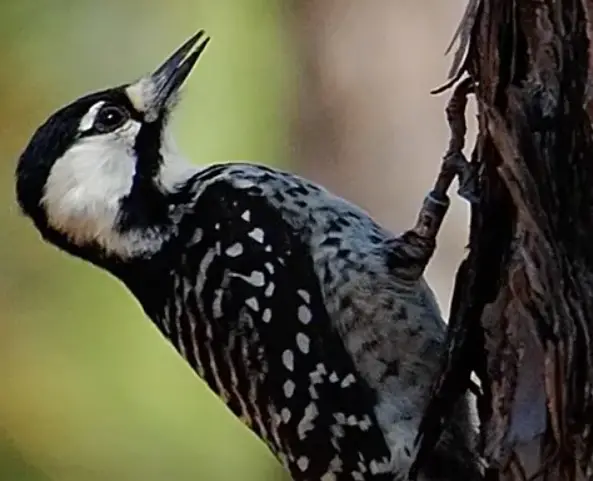
The Red-cockaded Woodpecker is a small to medium sized woodpecker that is between six and seven inches in length. The back of the bird is black with white bars, while the underparts are mostly white. The male has a red cap, while the female has a brownish-red cap. Juveniles have no red on their heads.
This bird can be found in the southeastern United States, from Florida to Virginia. These woodpeckers in Maryland are most commonly found in the western and central part of the state.
The Red-cockaded Woodpecker nests in live pine trees that are at least eight inches in diameter. The nest is excavated in the soft wood just below the bark. The female will lay three to five eggs in the nest, which are incubated for about two weeks.
Both parents help to feed the young birds until they are old enough to leave the nest, which is usually around six weeks of age. After that, they will still be dependent on their parents for food for another few weeks.
The Red-cockaded Woodpecker is listed as a threatened species due to loss of habitat. They require large tracts of forest with mature trees in order to survive. As the forests are fragmented and developed, this bird is losing its homes.

Related post: Types of Woodpeckers in Montana
Red-bellied Woodpecker
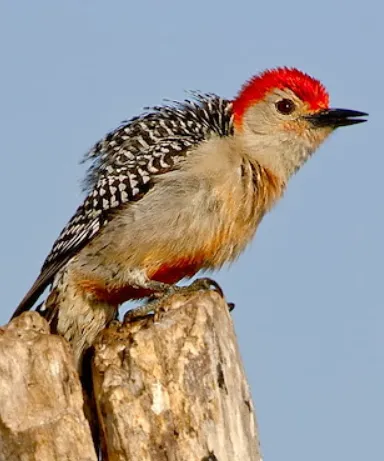
The red-bellied woodpecker is a small to medium sized bird with a length of around nine inches. The back and wings are black, while the belly and underparts are shades of red.
There is also a white stripe that runs down the middle of the bird’s face. The male and female birds look similar, but the male has a red cap, while the female has a black cap. The red-bellied woodpecker is found in woodlands and forests across the eastern United States.
The bird feeds on insects, fruits, and nuts. The bird nests in trees, drilling small holes into the bark to make a nest. The red-bellied woodpecker is a common bird, and is not considered to be at risk.

Red-headed Woodpecker
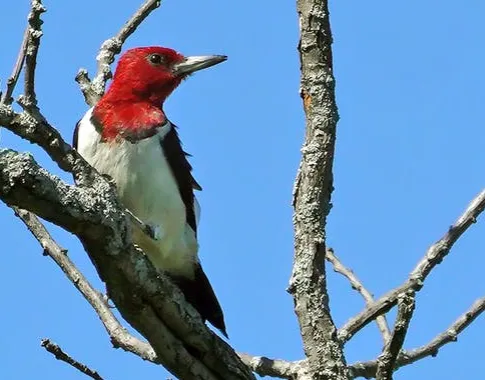
The red-headed woodpecker is a medium sized bird with a black body and white underparts. The head is red with a white patch on the back of the neck. This woodpecker is found in deciduous forests and prefers to nest in trees. The red-headed woodpecker feeds on insects, fruits, and nuts.
This woodpecker is known to be aggressive and will often chase other birds away from its territory. The red-headed woodpecker is a common bird in Maryland and can be seen throughout the state.
This woodpecker can be distinguished from other woodpeckers by its red head and white neck patch. The red-headed woodpecker is a beautiful bird that is fun to watch.

Pileated Woodpeckers
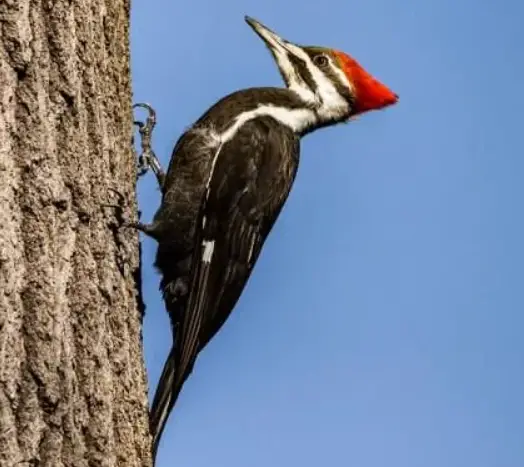
Pileated Woodpeckers are the largest woodpeckers in North America, and they are very distinctive looking birds. They have black bodies with white stripes running down their necks, and they have large red crests on their heads. Pileated Woodpeckers are also known for their loud calls, which sound like a person laughing.
Pileated Woodpeckers are very shy birds, and they are not often seen in urban areas. They prefer to live in forests where there are lots of trees for them to climb. Pileated Woodpeckers also eat a lot of insects, so they are important for controlling insect populations in forests.
If you see a Pileated Woodpeckers in Maryland, it is likely that the birds are nesting. Pileated Woodpeckers usually nest in tree cavities, and they will often excavate their own nest holes. These birds typically lay four eggs per clutch, and both parents help to care for the young.

What’s the difference between a downy woodpecker and a hairy woodpecker?
Downy woodpeckers and hairy woodpeckers are both small to medium sized birds with black and white plumage. The main difference between these two types of woodpecker is the size of their bill. Downy woodpeckers have smaller bills than hairy woodpeckers. Hairy woodpeckers also have longer tongues than downy woodpeckers.
Both of these types of woodpeckers are found in North America. Downy woodpeckers are more common in the eastern United States, while hairy woodpeckers are more common in the western United States. Both of these birds feed on insects, fruits, and nuts.
If you see a black and white bird with a small bill, it is most likely a downy woodpecker. If you see a black and white bird with a large bill, it is most likely a hairy woodpecker. These birds are both common in the United States and are fun to watch.
What does it mean when you have a woodpecker at your house?
Woodpeckers are known to be attracted to houses for a few reasons. One reason is that woodpeckers are looking for food. Woodpeckers will eat insects, so if your house has a lot of insects, you may see more woodpeckers.
Another reason woodpeckers may be attracted to your house is because they are looking for a place to nest. Woodpeckers will drill small holes into the bark of trees to make a nest. If your house has a lot of trees, you may see woodpeckers nesting on your property.
Woodpeckers can also be attracted to houses because they are attracted to the sound of humans. Woodpeckers are very social birds, and they like to be around other birds. If you have a lot of bird feeders on your property, you may see woodpeckers coming to visit.
Having a woodpecker at your house can be a good or bad thing depending on your perspective.
What woodpeckers are found in Maryland?
There are many different types of woodpeckers in Maryland. Some of the more common woodpeckers include the red-headed woodpecker, downy woodpecker, and hairy woodpecker.

An avid ornithologist, zoologist and biologist with an unwavering passion for birds and wild animals.
Dr. Wilson’s journey in ornithology began in childhood and led him to obtain a Ph.D. in Ornithology from the prestigious Avian Research Institute. He has worked closely with renowned experts in the field and conducted extensive research and field studies globally.

